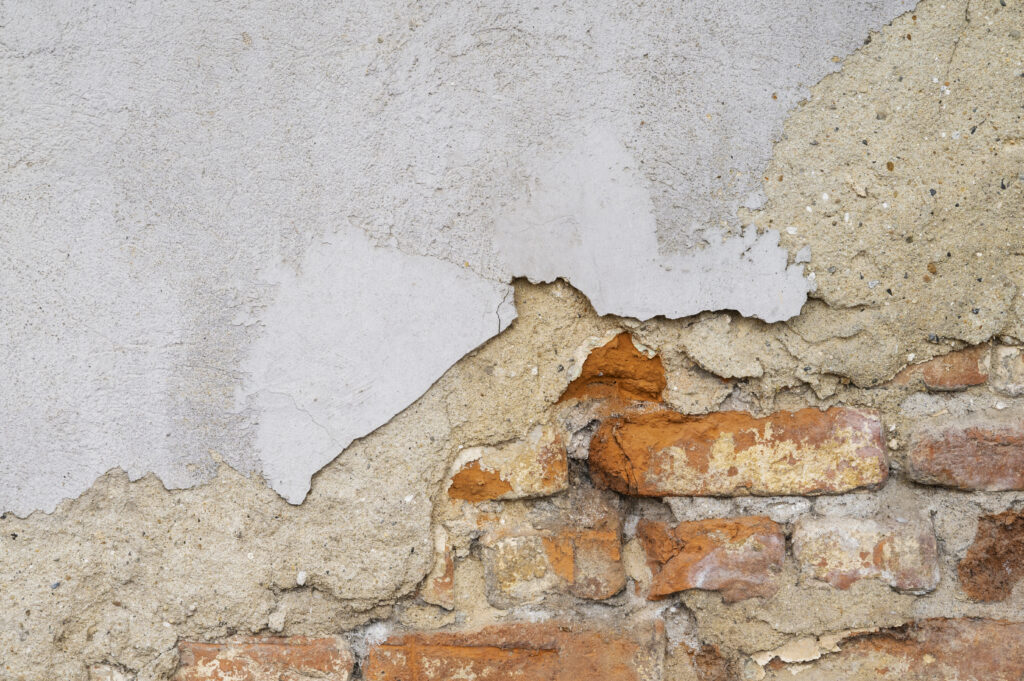What is Rising Damp?
Rising damp is a common issue that affects many homes, particularly those with older construction. It occurs when groundwater rises through porous materials, such as bricks and mortar, and seeps into the walls. This can lead to a range of problems, including damage to the structure of the building, the growth of mould and mildew, and the deterioration of internal finishes.
Causes of Rising Damp
There are several factors that can contribute to the occurrence of rising damp. One of the main causes is the absence or failure of a damp-proof course (DPC), which is a barrier typically installed in walls to prevent moisture from rising. When a DPC is missing or compromised, groundwater can easily infiltrate the walls and cause dampness.
Another common cause is the presence of high ground levels or inadequate drainage around the property. If the ground outside the building is higher than the internal floor level or if there is poor drainage, water can accumulate and penetrate the walls.
Signs of Rising Damp
Detecting dampness early is crucial in order to prevent further damage. There are several signs to look out for, including:
- Damp patches: One of the most obvious signs is the appearance of damp patches on the walls. These patches are usually localised and may have a distinctive “tide mark” at the highest point of the dampness.
- Peeling wallpaper or blistering paint: When moisture is present within the walls, it can cause the wallpaper to peel or the paint to blister. This is a clear indicator that rising damp may be present.
- Damp and musty smell: Another telltale sign is a damp and musty smell in the affected area. The growth of mould and mildew, which thrive in damp environments, often causes this odour.
How Rising Damp Affects Internal Walls
The effects of dampness on internal walls can be detrimental if left untreated. As the moisture rises through the walls, it can cause the plaster to deteriorate and crumble. This can lead to unsightly wall surfaces and even structural damage if the problem persists.
In addition to the physical damage, it can also create an unhealthy living environment. The presence of excess moisture can promote the growth of mould and mildew, which can trigger respiratory problems and allergies in occupants.
How It Affects External Walls
While rising damp is commonly associated with internal walls, it can also have an impact on external walls. When water infiltrates the outer layer of the building, it can cause the mortar to weaken and the bricks to deteriorate. This can compromise the integrity of the entire structure and lead to costly repairs if it is not addressed promptly.
Furthermore, the constant presence of moisture on the external surfaces can result in unsightly staining and algae growth, further diminishing the aesthetic appeal of the property.
Is Rising Damp a Serious Problem?
Yes, it is a serious problem that should not be ignored. If left untreated, it can lead to significant damage to the building’s structure as well as health issues for its occupants. It is important to address dampness as soon as it is detected to prevent further deterioration and costly repairs in the future.
Recognising What Rising Damp Looks Like
Recognising the visual signs of rising damp is essential for early detection. As mentioned earlier, damp patches, peeling wallpaper or blistering paint, and a musty smell are common indicators. Additionally, you may notice salt deposits on the affected walls as the rising moisture carries minerals from the ground.
It is important not to confuse rising damp with other forms of dampness, such as condensation or penetrating damp. These problems have different causes and require different treatment approaches.
Rising Damp Treatment Options
When it comes to treating dampness, several options are available depending on the severity of the problem. It is recommended to consult a professional damp specialist to assess the situation and provide the most suitable solution. Some common treatment options include:
- Damp proof course (DPC) installation: If the existing DPC is missing or ineffective, installing a new DPC can prevent further moisture from rising into the walls. This involves injecting a water-resistant material into the affected areas to create a barrier against groundwater.
- Chemical damp proofing: This method involves the application of chemical solutions to the affected walls. These solutions penetrate the porous materials and create a water-repellent barrier, preventing rising damp.
- Improved drainage: In cases where poor drainage is contributing to dampness, improving the drainage system around the property can help redirect water away from the walls. This may involve installing drains or creating sloping surfaces to facilitate water runoff.
How is Rising Damp Treated?
The treatment of rising damp typically involves a combination of the aforementioned methods tailored to the specific circumstances of each case. A professional damp specialist will assess the extent of the problem and determine the most effective course of action.
The first step in treating dampness is to identify the cause and address any underlying issues. This may involve repairing any defects in the DPC, improving drainage, or fixing leaks that may be contributing to the problem.
Once the underlying issues have been resolved, the chosen treatment method can be implemented. This may involve the installation of a new DPC, the application of chemical solutions, or a combination of both. Following the manufacturer’s instructions and ensuring that a qualified professional carries out the treatment is important.
Internal Walls
Treating dampness on internal walls requires a systematic approach to ensure long-lasting results. The following steps outline the general process:
- Assessment: A thorough assessment of the extent and severity of the dampness is conducted to determine the appropriate treatment method.
- Preparation: Before treatment can begin, it is important to prepare the affected areas. This may involve removing any damaged plaster or wallpaper and cleaning the surfaces to ensure proper adhesion of the treatment materials.
- Treatment: The chosen treatment method is applied to the affected walls according to the manufacturer’s instructions. This may involve the installation of a new DPC or the application of chemical solutions.
- Reinstatement: Once the treatment has been completed and the walls have dried, the affected areas can be reinstated. This may involve re-plastering, re-papering, or repainting the walls to restore their appearance.
Common Misdiagnosis
It is not uncommon for rising damp to be misdiagnosed, leading to ineffective or unnecessary treatments. Some common misdiagnoses include:
- Condensation: Condensation occurs when warm, moist air comes into contact with cold surfaces, resulting in water droplets. This can be mistaken for rising damp, but the causes and treatment methods are different.
- Penetrating damp: Water entering the building through external defects, such as leaking roofs or faulty gutters, causes penetrating damp. While it can cause similar symptoms to rising damp, the underlying causes and treatment approaches are distinct.
- Leaks: Plumbing leaks or roof leaks can also be mistaken for rising damp. It is important to identify the source of the moisture accurately to provide the appropriate treatment.
The Effectiveness of Damp-Proof Courses (DPCs)
Damp-proof courses (DPCs) play a crucial role in preventing rising damp. When installed correctly and maintained, they can effectively stop groundwater from infiltrating the walls. However, the effectiveness of DPCs can be compromised over time due to various factors, such as age, damage, or poor installation.
Regular inspections and maintenance of DPCs are essential to ensuring their continued effectiveness. If a DPC is found to be defective or missing, prompt action should be taken to repair or replace it to prevent rising damp.
Key Takeaway
Rising damp is a serious issue that can cause significant damage to buildings and pose health risks to occupants. It is important to recognise the signs of rising damp and take appropriate measures to address the problem promptly. Consulting a professional damp specialist is highly recommended to assess the situation and determine the most effective treatment options.
By understanding the causes, signs, and treatment methods of rising damp, homeowners can protect their properties and ensure a safe and healthy living environment. Remember to address rising damp early to prevent further damage and maintain the integrity of your walls and the overall structure of your home.

